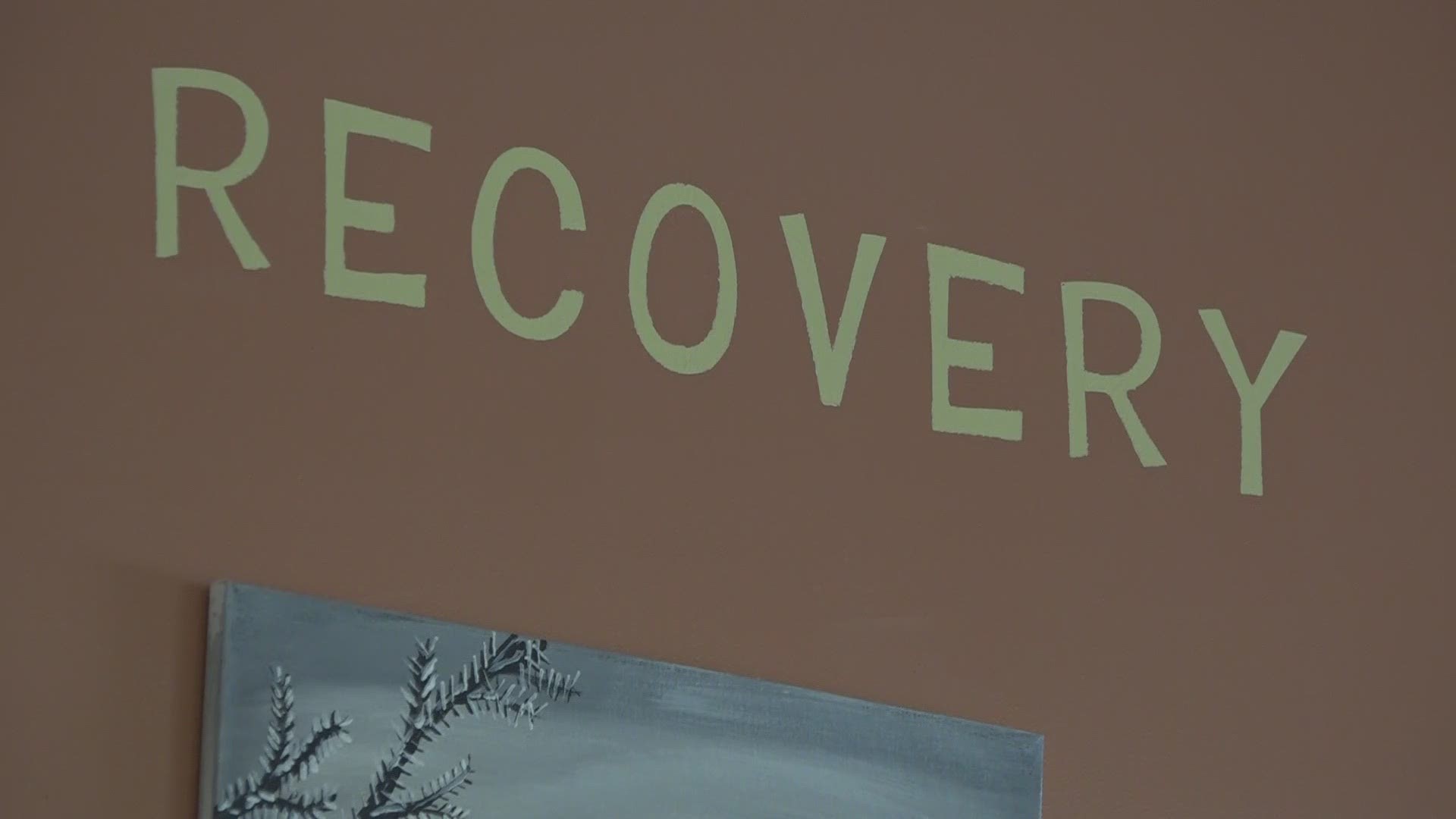MAINE, USA — The Maine Attorney General's Office released its drug death report for 2020 (January - March) on July 17, as well as its estimates for the second quarter.
During the first quarter of 2020, total fatalities due to drugs are 23% higher than the fourth quarter of 2019: 127 compared to 103.
The estimated total for the second quarter is 132, with a total of 259 estimated for the first half of 2020. The overall increase, comparing 2019 and the estimate for the first half of 2020, is statistically significant (p=.0039). It is comparable to increases being seen nationally, which are attributed to the effects of the pandemic, including social isolation, economic difficulty, and reluctance to seek medical attention.
According to the report, interruptions in drug supplies internationally have resulted in substitutions and combinations that may be contributing to additional vulnerabilities to overdose.
The report also found the following:
Opioids (both pharmaceutical and nonpharmaceutical) were implicated in 82% of first quarter deaths. Nonpharmaceutical fentanyl drugs in particular were implicated in 61% of deaths, and 68% of opioid deaths, which is a reduction since 2019 when fentanyl caused 68% of all drug deaths, and 81% of opioid deaths. Most first quarter deaths, 80%, involved two or more drugs listed as a cause of death. Nonpharmaceutical opioid deaths were very likely to have co-intoxicant stimulants, cocaine or methamphetamine, increasing since 2019. Pharmaceutical opioids caused 27% of deaths, many in combination with nonpharmaceutical opioids. About a third of opioid deaths (35, 34%) had received naloxone, a higher number but the same proportion as in the fourth quarter 2019 (29, 34%).
Using data from April and May as an estimate for the second quarter, the same general patterns continue from the first quarter, but with a higher proportion of deaths involving two or more drugs (87%), a higher proportion of deaths due to opioids (86%), and a higher proportion of deaths due to nonpharmaceutical fentanyl and its analogs (71%). There is a rise in the proportion of deaths including cocaine as a cause of death (36% compared to 30% in the first quarter), but a lower proportion caused by methamphetamine (12% compared to 16%). Pharmaceutical opioids were implicated in 24% of deaths, slightly lower than 27% in the first quarter; they were frequently in combination with nonpharmaceutical opioids. Naloxone was present in 35% of the opioid deaths, approximately the same proportion as the first quarter.
The report also notes the following overall patterns:
- Most (101, 80%) drug deaths were caused by two or more drugs, which is greater in number and less in proportion than the fourth quarter 2019 (94, 91%). The average cause of death involved 3 drugs.
- The vast majority of overdoses (104, 82%) were caused by at least one opioid, including both pharmaceutical and illicit (nonpharmaceutical) opioid drugs. This is greater in number and nearly the same proportion as in the fourth quarter 2019 (85, 83%).
- Nonpharmaceutical fentanyl (and/or its analogs) caused 77 (61%) deaths, alone or in combination with other drugs, which is higher in number but much lower in proportion than the fourth quarter of 2019 (72, 70%).
- Heroin/morphine caused 18 (14%) deaths, in combination with other drugs, which is about the same in number but lower in proportion than fourth quarter 2019 (17, 17%).
- Cocaine or crack caused 38 (30%) deaths, in combination with other drugs, which is higher in number but about the same proportion compared to fourth quarter 2019 (30, 29%).
- Methamphetamine caused 20 (16%) deaths, in combination with other drugs, which is slightly higher in number and slightly lower in proportion compared to fourth quarter 2019 (18, 17%).
- Pharmaceutical opioid deaths caused 34 (27%) deaths, alone or in combination with other drugs, which is higher in number and about the same proportion as in fourth quarter 2019 (27, 26%).
- Naloxone was given in 35 (28%) opioid deaths, which is higher in number and the same proportion as in fourth quarter 2019 (29, 28%).1
- There has been an increase in the involvement of mitragynine2 (“Kratom”) in Maine deaths, 5 in this quarter, compared with 1 in the fourth quarter 2019, and 10 in 2019 as a whole.
“Every number in this report is the life of a loved one lost. We grieve with the families, employers and communities diminished by this devastating public health crisis, a public health crisis now made worse by a pandemic that is limiting access to life-saving services and increasing isolation for people in recovery,” Governor Janet Mills said in response to the report. “I want all Maine people struggling with substance use disorder to know that even during the pandemic, help is still available. You are not alone. There is no quick or easy cure, but we will continue to put the full force of this Administration behind your recovery. Together, we can defeat the opioid epidemic and make our state whole once again.”
“Since our opioid response effort was launched last year, we have successfully reversed hundreds of overdoses which would have otherwise been fatal, improved access to substance use disorder treatment, expanded prevention and education efforts, and supported strong community responses to the opioid epidemic. These alarming increases in overdose deaths, which mirror a nationwide trend, are evidence that we must continue to do more,” Director of Opiod Response Gordon Smith added. “Next week at the Governor’s Opioid Response Summit, we will examine the State’s efforts to confront the opioid epidemic, discuss steps to increase and improve access to remote recovery services during the pandemic, and recommit to serving all those who have been affected by substance use disorder in the state of Maine.”
THE ENTIRE REPORT
If you or someone you know is struggling with drug addiction, there are resources in Maine for seeking help. CLICK HERE FOR MORE.

